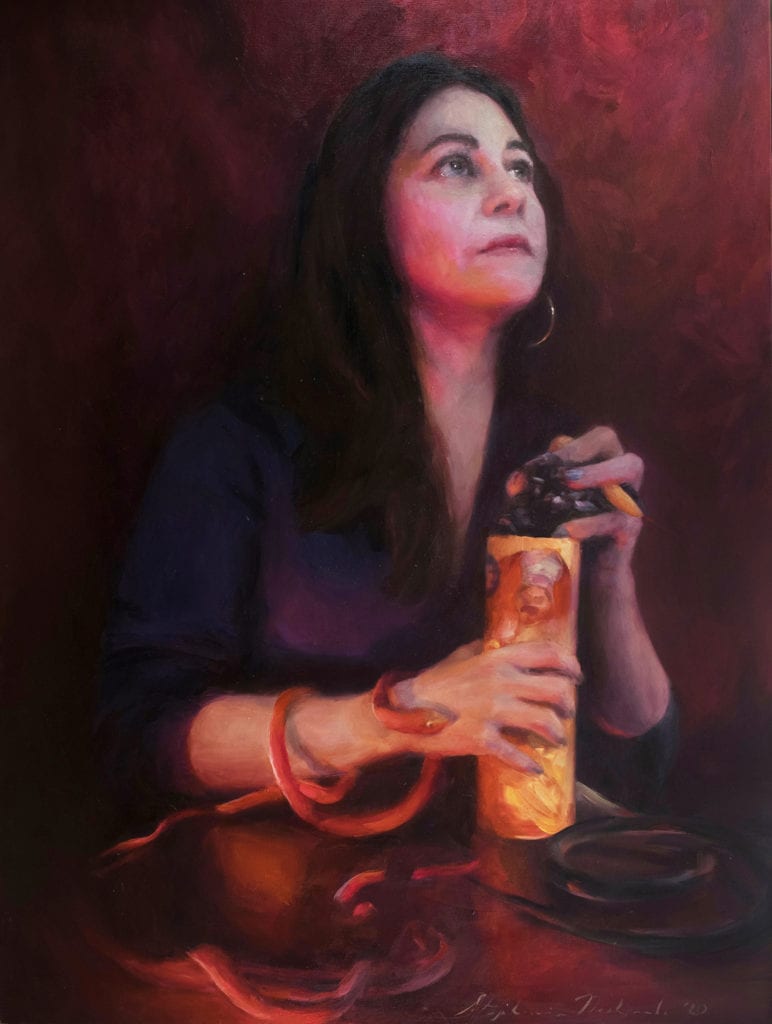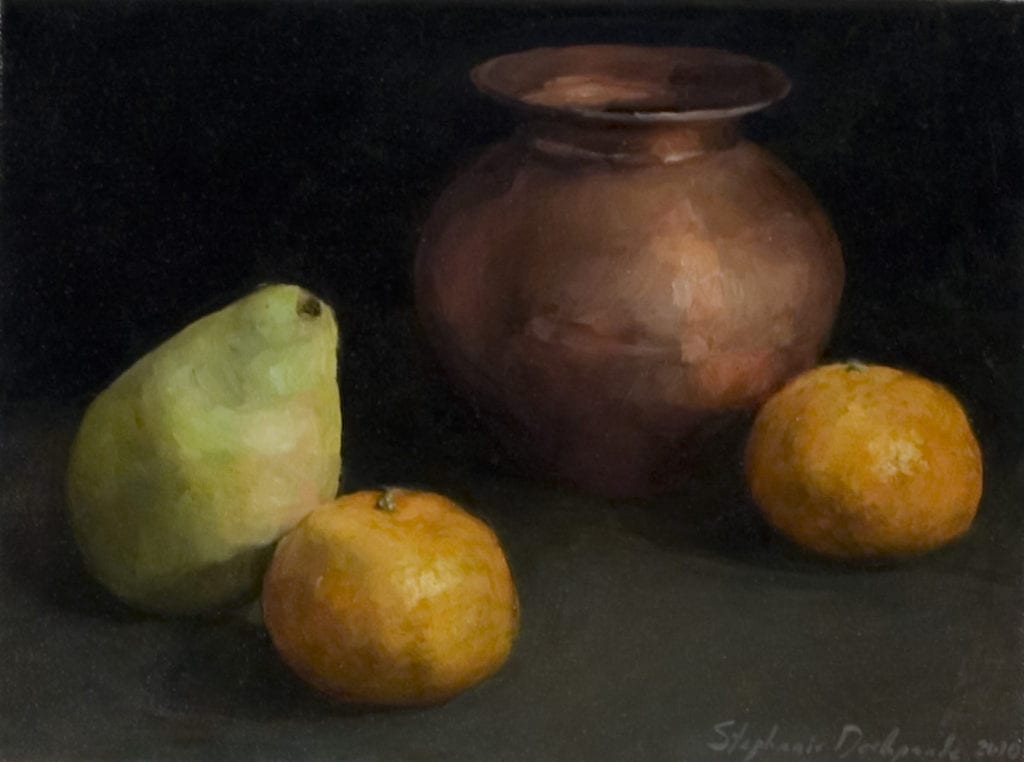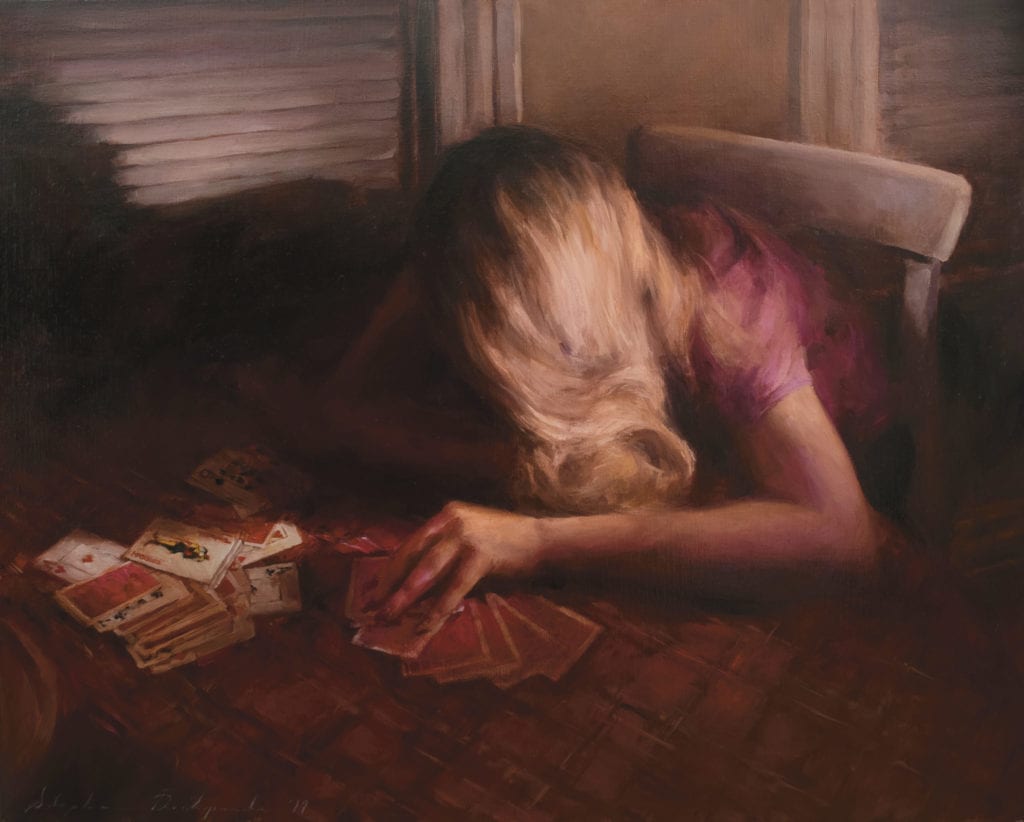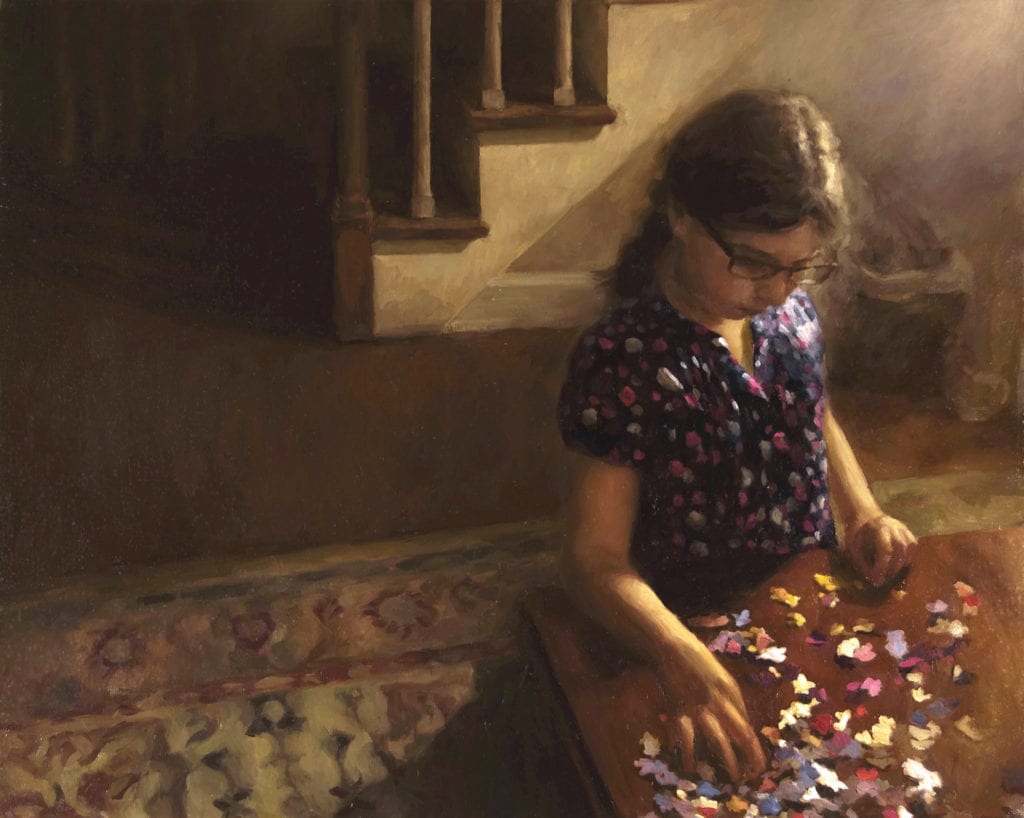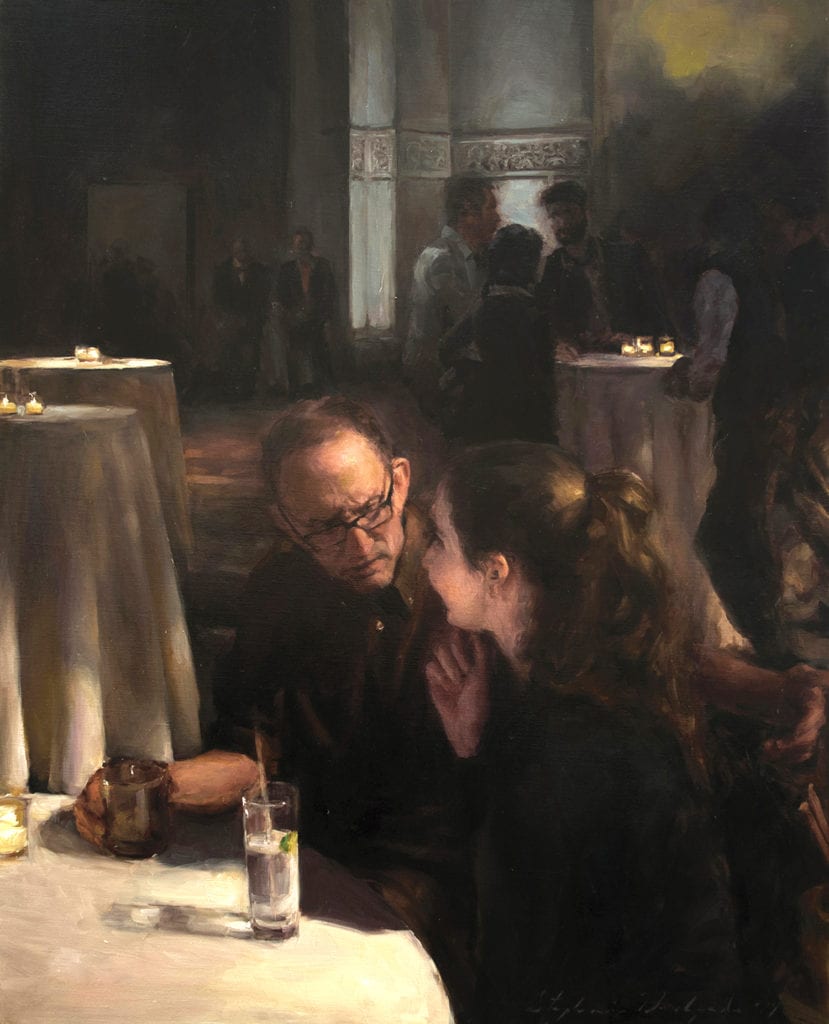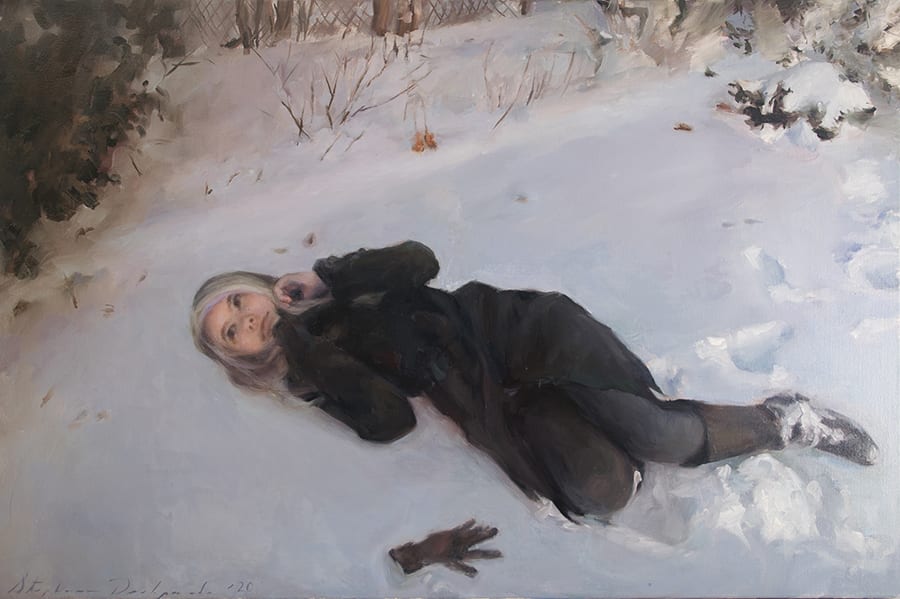Creating a successful painting not only requires focus on technical skills such as drawing, color, values, edges, and composition, but also on emotional impact. Incorporating metaphor, mystery, and memory into your work will help develop a dynamic image that resonates with the viewer.
Metaphors
“A visual metaphor is an image that the viewer is meant to understand as a symbol for something else. Visual metaphors can be obvious, subtle, funny, or scathing, but they form a nexus of imagery that artists have used across the centuries to help communicate information without words.” (What does imagery mean? https://www.omniverse-plastikos.com/top/what-does-imagery-mean.html)
Visual metaphors can add depth and meaning to a painting and create food for thought for the viewer. Also, through the process of creating these metaphors, artists often form a deeper connection with their artwork.
In my painting, Containment, I chose snakes as a metaphor for anger and internal emotions. The woman tries to contain the snakes in a canister, but they spill out onto her arms and table. I used snakes to portray her internal struggle, which would not be easy to depict from facial expressions or body language alone.
In Still Life with Fruit, I placed the fruit in a way that creates an unusual tension and suggests a deeper narrative. Since I did not have the human subject matter I needed when I developed the painting concept, I used metaphor to express my idea instead. I positioned fruit in a way that alludes to a particular dynamic between people. Instead of being hindered by limitations, let them inspire your creativity!
Mystery
Unanswered questions and unexplained circumstances can help create a sense of mystery. Try incorporating something unusual in your painting, and leave the viewer guessing about its meaning or connection to the narrative. You will create interest by leaving something for the viewer to figure out.
When I first started painting, the mysterious quality of Balthus’ paintings influenced my work. His paintings intrigued me because of the psychological drama and unanswered questions. He explained his approach by saying, “I always feel the desire to look for the extraordinary in ordinary things; to suggest, not to impose, to leave always with a slight touch of mystery in my paintings.” (https://www.theartstory.org/artist/balthus/)
Alan Feltus is another artist whose work has a sense of mystery and hidden significance. In his memoir, he explained that “it would be wrong to paint mystery in a deliberate, conscious way. Subconscious imagery lives within a person’s mind on a subtle level, and I would have to find it as I worked on paintings, allowing it to emerge almost on its own. I wanted imagery that would work as an unreality in which things didn’t have to make sense in terms of real space or the laws of gravity.” (Home [www.alanfeltus.com]. http://www.alanfeltus.com/)
Viewers often question what is happening and what the figures are discussing in my painting, Conversations. The unanswered questions keep people engaged, trying to guess the answer. The painting encourages the viewer to bring his or her own perspective and experience into the narrative.
Since my own memories and private speculation fuel my work, a sense of mystery often occurs naturally. I am not so much trying to tell a story as I am reflecting on experiences from my own life. Like a work of fiction, the external narrative shrouds my perspectives.
I would not recommend trying to manufacture mystery in your artwork because it may come across as contrived. Instead, let it manifest naturally as you work on your painting. If you choose a subject matter that is personal, or close to your heart, you may be more inclined to conceal the aspects that make you feel vulnerable. Your secrets will likely create ambiguity and intrigue.
Memory
Another element that can enhance your work is incorporating your own personal connection to the image. Letting memories inspire your art can play a similar role as mystery, but it originates from your unique experience. A painting based on personal memories can be more literal, but the inspiration and meaning will not be obvious to the viewer.
Reisha Perlmutter, a contemporary artist living in New York, paints women swimming and submerged in translucent, blue water. She describes how her work is inspired by her childhood memories. Her paintings have an intimate feel as the viewer identifies with the sensation of water and light. You can view her artwork on her website, www.reishaperlmutter.com.
My painting Fresh Fallen Snow was based on recollections of my childhood being in my yard with friends on a snowy day. I remember lying in the cold snow with the icy scent of winter in the air as my friends ran off. In this painting, I recreated a memory using my daughter as the model. The painting originated from a personal experience, but now takes on a life of its own.
There are numerous ways to create a dynamic work of art, and each person will draw inspiration from various sources that reflect their unique view of the world. As an artist, it is essential to take time out of your busy schedule to listen to your thoughts and process emotions without distractions. By delving into yourself, you will imbue your art with a sense of meaning. I find that infusing metaphor, mystery, and memory into my paintings gives them more depth. What inspires your artwork?
